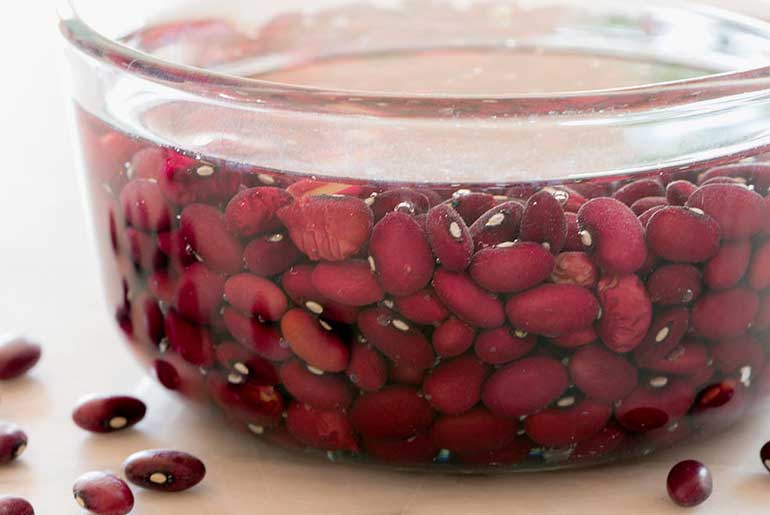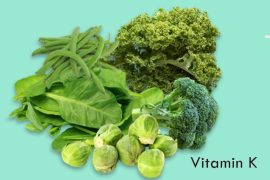Soaking beans before cooking, a practice often passed down from our grandmothers, offers several health benefits. It not only shortens cooking time but also enhances digestibility, reducing post-bean bloating commonly experienced after lentil curries or stews. This process also helps break down harmful substances that can inhibit nutrient absorption. To maximize these benefits, be sure to soak your beans before preparing dishes like stews or curries. Here’s a guide on how to soak beans properly to make the most of their nutritional advantages.
Benefits of soaking beans before cooking:
- Reduced Cooking Time: Soaking beans softens them, which can significantly reduce the cooking time. This not only saves energy but also makes the cooking process more efficient. Research has shown that adding a pinch of salt to the soaking water can further enhance this effect.
- Improved Digestibility: Beans contain oligosaccharides, complex sugars that can be difficult to digest and may cause gas and bloating. Soaking beans helps break down these sugars, making the beans easier on the digestive system and reducing digestive discomfort.
- Enhanced Nutrient Absorption: Soaking beans can help reduce the levels of anti-nutrients like phytic acid, which inhibit the absorption of essential minerals such as iron, zinc, and calcium. This can improve the overall nutritional value of the beans.
- Reduced Toxins: Certain beans, like red kidney beans, contain toxins such as lectins that can be harmful if not properly prepared. Soaking beans and then cooking them helps to reduce these toxins, making the beans safer to consume.
- Better Texture and Flavor: Beans that are soaked tend to cook more evenly and have a better texture, becoming tender without becoming mushy. Soaking also helps to remove some of the compounds that cause bitterness, improving the overall flavor of the beans.
Overall, soaking beans can enhance their nutritional benefits, make them easier to digest, and improve their taste and texture.
Guide to soaking beans before cooking:
- Sort Your Beans: Spread the beans out on a flat surface to inspect them. Remove any rocks, dirt, or damaged beans.
- Rinse: Wash the beans thoroughly under cool running water to remove any residual dirt or debris.
- Soak: Place the beans in a large bowl or pot. Cover them with about 3-4 inches of water (or roughly 10 cups of water for every 3 cups of beans). Let them soak for 6-8 hours or overnight.
- Drain and Rinse: After soaking, drain the water and rinse the beans with fresh water. This helps to remove any remaining dirt or debris.
- Boil: In a pot, add 5 cups of water for every 1 cup of dried beans. Bring it to a boil and let it boil for 2-3 minutes.
- Soak Again: Turn off the heat, cover the pot, and let the beans soak for about an hour.
- Drain and Rinse: Drain the soaking water and give the beans another rinse with fresh water before cooking.
Following these steps helps to ensure that your beans are clean, easier to digest, and ready for cooking.
Soaking methods for beans:
1. Traditional Soaking
- Process: For every pound of dry beans, add 10 cups of cold water and soak overnight or for at least 6-8 hours.
- Advantages: Helps beans maintain their shape and texture better. Provides the most thorough soaking, which can be beneficial for beans with tougher skins. Ideal if you have the time and plan ahead for your meal.
2. Quick Soaking
- Process: Add 5 cups of hot water to 1 cup of beans. Bring to a boil for 2-3 minutes, then remove from heat, cover, and let soak for an hour.
- Advantages: Much faster than traditional soaking, making it a convenient option for last-minute meal preparation. Reduces cooking time significantly compared to starting with unsoaked beans.
Traditional vs. Quick Soaking
- Traditional Soaking: Best if you have time and want the most consistent texture and flavor. This method allows beans to fully hydrate and is often preferred for recipes requiring a long cook time.
- Quick Soaking: Ideal for busy schedules or if you need beans ready in a shorter time frame. While it’s a quicker method, some slight differences in texture and flavor might occur compared to traditionally soaked beans.
Important tips for soaking and cooking beans:
- Rinse Thoroughly: After soaking, rinse beans thoroughly to remove any remaining anti-nutrients and oligosaccharides that could cause digestive discomfort.
- Gradual Introduction: If you’re new to eating beans, start with small amounts and gradually increase your intake. This allows your digestive system to adjust to the fiber and complex sugars in beans.
- Combine with Digestive Aids: When cooking beans, consider adding herbs and spices like cumin, ginger, and bay leaves. These can help reduce gas and improve digestion.
- Balanced Diet: Pair beans with grains, vegetables, and proteins to create a balanced meal and optimize nutrient absorption. Combining beans with foods rich in complementary amino acids, such as rice, can enhance their nutritional value.
- Proper Cooking: Ensure beans are cooked thoroughly to break down any harmful compounds, such as lectins, which can cause digestive issues and toxicity if beans are not properly cooked.
- Hydration: Drink plenty of water throughout the day, especially when consuming beans, to help with digestion and prevent potential digestive discomfort.
Following these tips can help you enjoy the nutritional benefits of beans while minimizing any potential digestive issues.
Disclaimer:
The information contained in this article is for educational and informational purposes only and is not intended as a health advice. We would ask you to consult a qualified professional or medical expert to gain additional knowledge before you choose to consume any product or perform any exercise.







